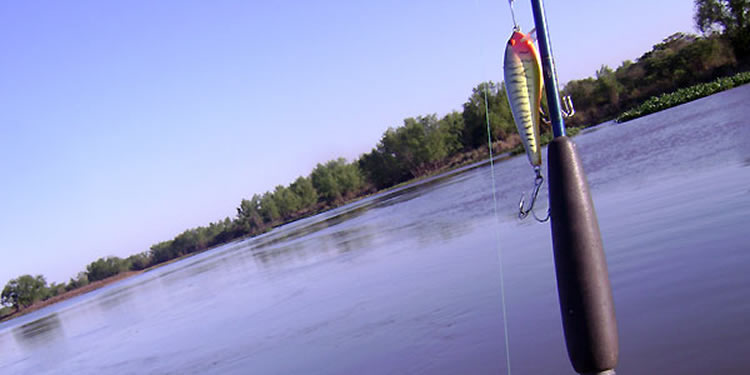
Even if it is a controversial matter, for it has many supporters and many challengers, we could assert that this modality questions its sport essence, as the angler just has to wait for the fish to get hooked. The secret lies in who maneuvers the craft, more than in who holds the rod.
But if the question is effectiveness, larger sizes have been caught under this modality.
When trolling, the angler throws the lure, which can be either a soft or a hard body lure, into the water and, as the craft moves ahead slowly, he lets the lure get distant from the boat. When it is about fifty meters away, the angler locks his reel, either front drag or spinning, so that the traction of the craft movement makes the lure "work" in the correct way, with the spinning movements for which it was designed.

This fishing modality is practiced with salmonidae in the large lakes of our Patagonia, and in the rivers of the littoral, especially in the Paraná River, in search of the large dorados and surubíes.
The rod used is specially designed to fish from a craft. The best option is a graphite rod, measuring from 2 to 2.5 meters of length, suitable to cast up to 30 grams either with front drag or spinning reel, with a capacity of 150 meters of 0.25 to 0.40 nylon, depending on the species to be caught. This is the equipment generally used by most trolling enthusiasts.
In general, the lures used are the same as those used in spinning, but in larger sizes.
The hard body lures with large swivels -their size determines the depth at which the lure will swim- are the best alternative, as the larger fish dwell the deepest areas, waiting for their prey.
The color range of the lures is wide and varies according to the anglers' taste.